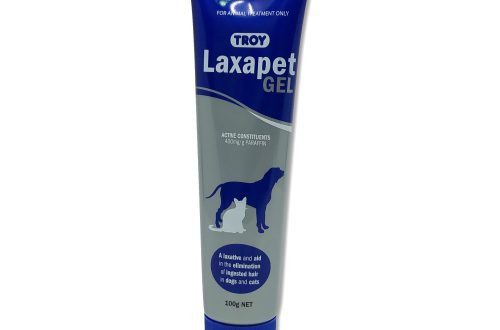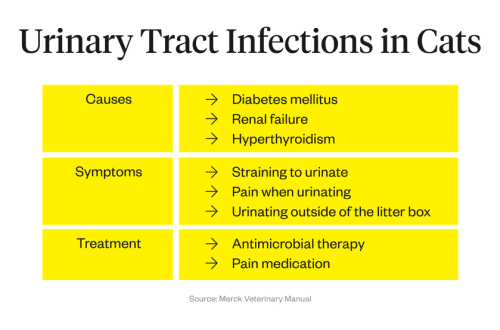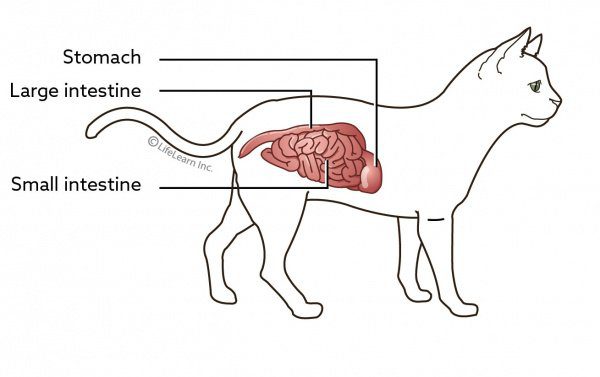
Gastroenterocolitis in cats

Contents
About the disease
With inflammation of all parts of the gastrointestinal tract, the animal cannot adequately eat and digest it. The most common symptoms of pathology will be nausea, vomiting and diarrhea. So, in addition to the loss of nutrients and fluids due to reduced appetite and vomiting, the cat will lose them with loose stools. If gastroenterocolitis in a cat is also accompanied by an increase in temperature, the pet can very quickly become critically ill due to dehydration.
Causes of gastroenterocolitis in cats
Various causes can lead to inflammatory processes in the gastrointestinal tract: viruses, parasites, bacteria, nutritional disorders, etc. Often, inflammation develops in one or two sections of the gastrointestinal tract. For example, such protozoa as Giardia prefer to live in the small intestine, which means that they will most likely lead to its inflammation – enteritis. But Trichomonas prefer the large intestine, and therefore will often cause colitis.
But the gastrointestinal tract is not divided by any strict boundaries and, regardless of the pathogen, inflammation can gradually cover all its departments.
This risk is especially high in animals with predisposing factors: chronic gastrointestinal diseases, decreased immunity due to chronic viral diseases (feline leukemia and cat immunodeficiency) or taking certain drugs (steroids, cyclosporine, chemotherapy).
Also, gastroenterocolitis in cats can occur with a combination of pathogens and as a complicated course of another gastrointestinal disease: gastroenteritis, enteritis.

Next, we look at the causes of HEC in cats in more detail.
Viruses. Feline panleukopenia by itself without any other factors often leads to acute and severe inflammation of all parts of the gastrointestinal tract.
Other viruses, such as coronavirus, can cause gastroenterocolitis in kittens and immunocompromised adult cats.
bacteria. In most cases, bacteria (salmonella, campylobacter, clostridia, etc.) will not cause gastroenterocolitis in an adult healthy cat, but can complicate viral, parasitic and other intestinal diseases.
Helminths and protozoa. They are dangerous for kittens and animals with a pronounced decrease in immunity. Parasitic pathologies can occur in combination: for example, helminthiasis and cystoisosporiasis or giardiasis. In such cases, the risk of developing HES is higher.
Power supply errors. Inappropriate food, for example, too fatty, spicy, salty, can cause significant inflammation of the gastrointestinal tract.
Feed that has been stored incorrectly, for example, in a humid, warm environment, can deteriorate with prolonged contact with air: rancid, moldy. Feeding such feeds is also fraught with problems with the gastrointestinal tract.
poisoning, intoxication. Some home and garden plants, such as sanseveria, sheffler, calla lilies, etc., have a pronounced irritant effect on the mucous membrane and can lead to inflammation of the oral cavity, esophagus and all parts of the gastrointestinal tract.
Also, cats often come into contact with household chemicals. Most often this happens by accident: the cat steps on the treated surface or gets dirty, and then licks and swallows the toxin.
Foreign body. Some foreign bodies, such as bones and their fragments, can injure the entire gastrointestinal tract and lead to gastroenterocolitis in a cat.
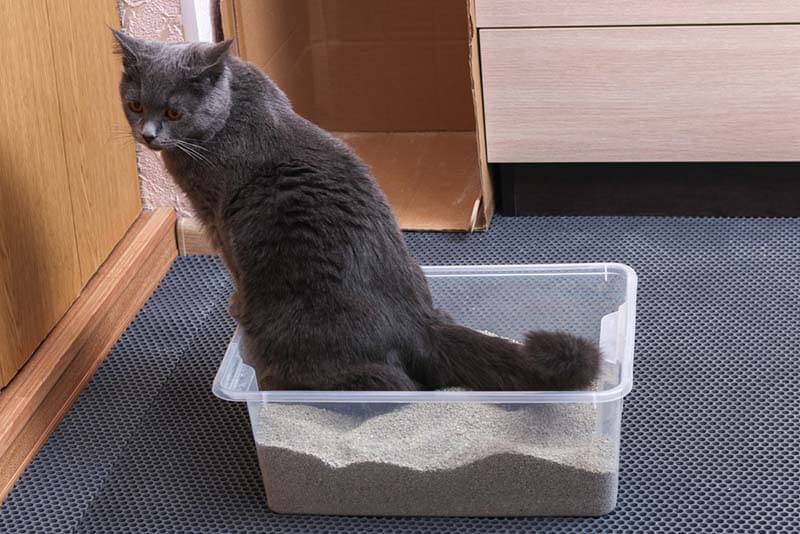
Symptoms
Given that HES affects all parts of the gastrointestinal tract, the disease is severe. Due to gastritis (inflammation of the stomach) and enteritis, nausea, vomiting, loss of appetite or complete refusal to feed develops.
Pain in the abdomen is possible, which will lead to the fact that the cat will be depressed, may take forced poses, hide in secluded corners.
The defeat of the large intestine – colitis – is characterized by watery, frequent diarrhea with a lot of mucus, blood inclusions, sometimes tenesmus (painful urge to defecate).
With infectious causes of gastroenterocolitis in cats, body temperature often rises.
The combination of these symptoms leads to rapid dehydration, electrolyte imbalance, intoxication. In severe cases, if left untreated, the animal may die.

Diagnosis of gastroenterocolitis
To assess the condition of the gastrointestinal tract, an ultrasound examination is required. It will allow you to examine all its departments and assess the degree of their inflammation, exclude a foreign body as the cause of HEC. Sometimes ultrasound is combined with x-rays.
To exclude specific pathogens, such as viruses or bacteria, special fecal diagnostics are used: rapid tests or PCR. Also, the PCR method can be used to detect protozoa: Giardia, Trichomonas and Cryptosporidium.
In the case of a severe course of the disease, additional studies are required: general clinical and biochemical blood tests.

Treatment of HES in cats
HES therapy is always complex. Regardless of the primary causes, relief of nausea and vomiting, fluid and electrolyte replacement is required if the animal is already dehydrated. The therapy also includes means to protect the gastric mucosa, sorbents, sometimes vitamins (for example, B12 – cyanocobalamin) and probiotics.
Antibacterial therapy is used to suppress pathogenic bacteria that can themselves cause gastroenterocolitis in cats or complicate its course for other reasons.
In case of helminthiases and protozoa, antiparasitic treatments are carried out.
If the animal develops fever and pain, anti-inflammatory painkillers are used.
The foreign body, if necessary, is removed surgically.
An important component of the treatment will be a specialized easily digestible diet, in some cases it can be used for a long time until the gastrointestinal tract is completely restored.

Gastroenterocolitis in kittens
The gastrointestinal tract in kittens is more sensitive to pathogenic factors and the risk of developing HEC is higher in them. Also, the disease can be more severe in kittens, especially in very young ones. Any neglected problem with the gastrointestinal tract can lead a kitten to inflammation of all its departments. Kittens are more sensitive to helminth and protozoan infestations.
The symptoms of HES – vomiting, loss of appetite, diarrhea – can very quickly lead the kitten to a serious condition. In babies, against the background of gastroenterocolitis, such a complication as hypoglycemia, a fatal decrease in blood glucose, can develop.
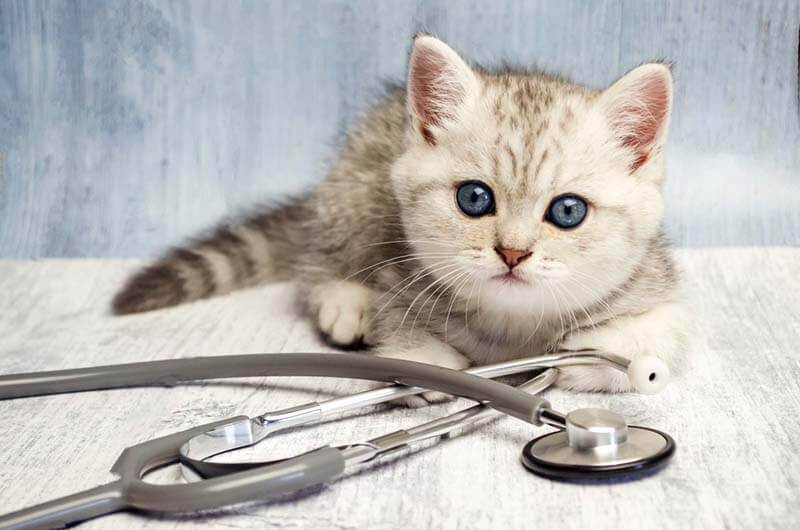
Prevention
Vaccination is one of the most important components of prevention. It can significantly reduce the risk of cat infection with panleukopenia.
Regular deworming.
Complete balanced diet.
Optimal living conditions in compliance with hygiene standards, especially if several cats live in the house.
Avoid contact of the animal with household chemicals and toxic plants.
Do not leave small items that your pet can swallow within reach.
Do not introduce any bones into the cat’s diet.
Do not feed her raw meat and fish.
Do not let the cat out on a free, uncontrolled range.
Gastroenterocolitis in Cats: Essentials
Gastroenterocolitis in cats occurs more often due to a combination of pathogens, as well as in animals with reduced immunity.
The main causes of gastroenterocolitis: viruses, bacteria, parasites, toxins, nutritional errors, foreign bodies.
For the diagnosis of gastroenterocolitis in cats, ultrasound, fecal tests are used. In severe cases – general clinical and biochemical blood tests.
Kittens are more susceptible to the development of HES and its severe course.
Treatment of HES is always complex, since all parts of the gastrointestinal tract are affected. It includes stopping vomiting, removing dehydration, antibiotics, gastroprotectors, vitamins, sorbents, a special diet, etc.
Prevention of gastroenterocolitis in cats includes vaccination, treatment for parasites, a balanced diet, safe and comfortable living conditions.
Sources:
Chandler E. A., Gaskell R. M., Gaskell K. J. Diseases of cats, 2011
E.D. Hall, D.V. Simpson, D.A. Williams. Gastroenterology of dogs and cats, 2010
Poisonous Plants. Poisonous plants // Source: https://www.aspca.org/pet-care/animal-poison-control/toxic-and-non-toxic-plants



